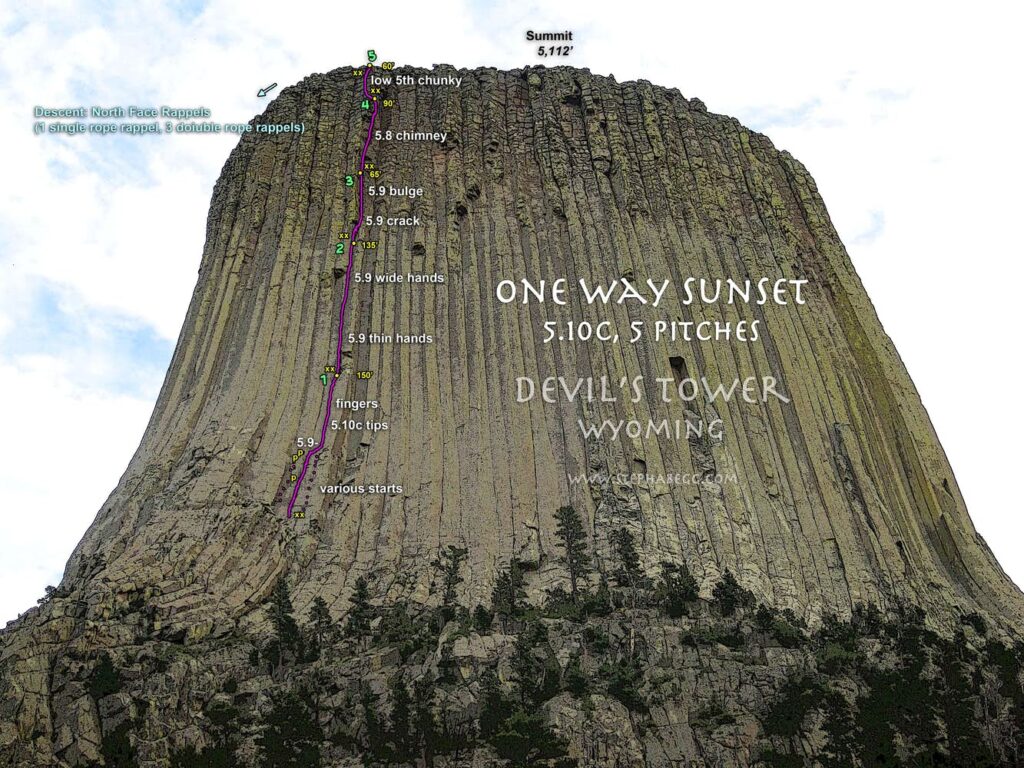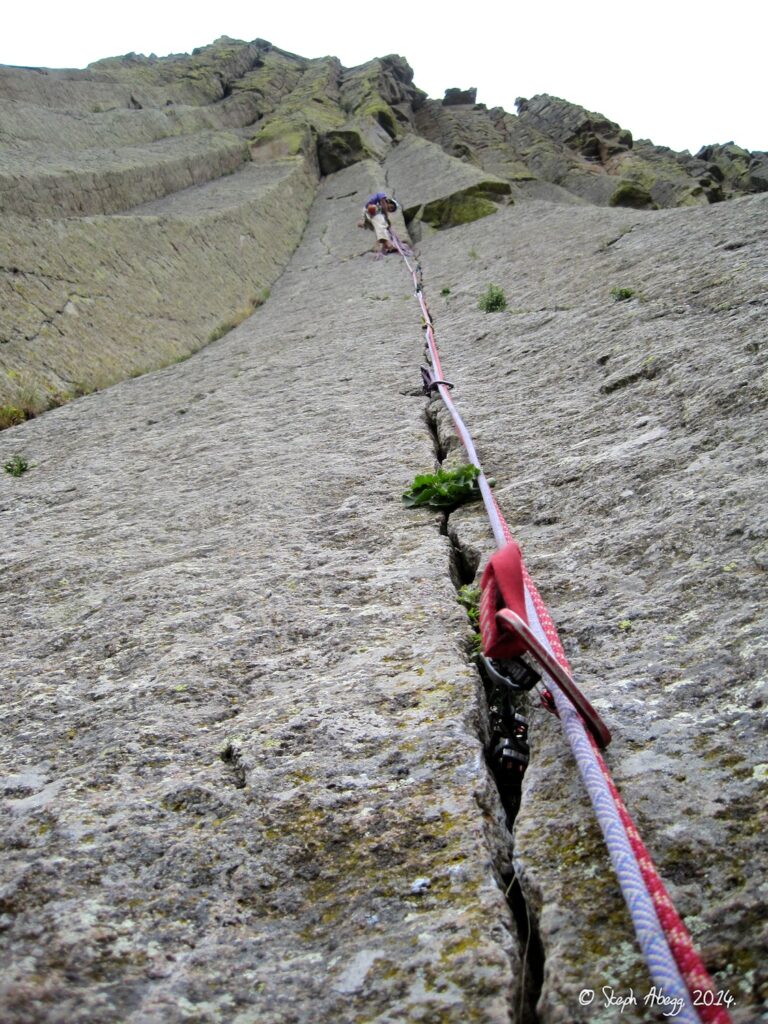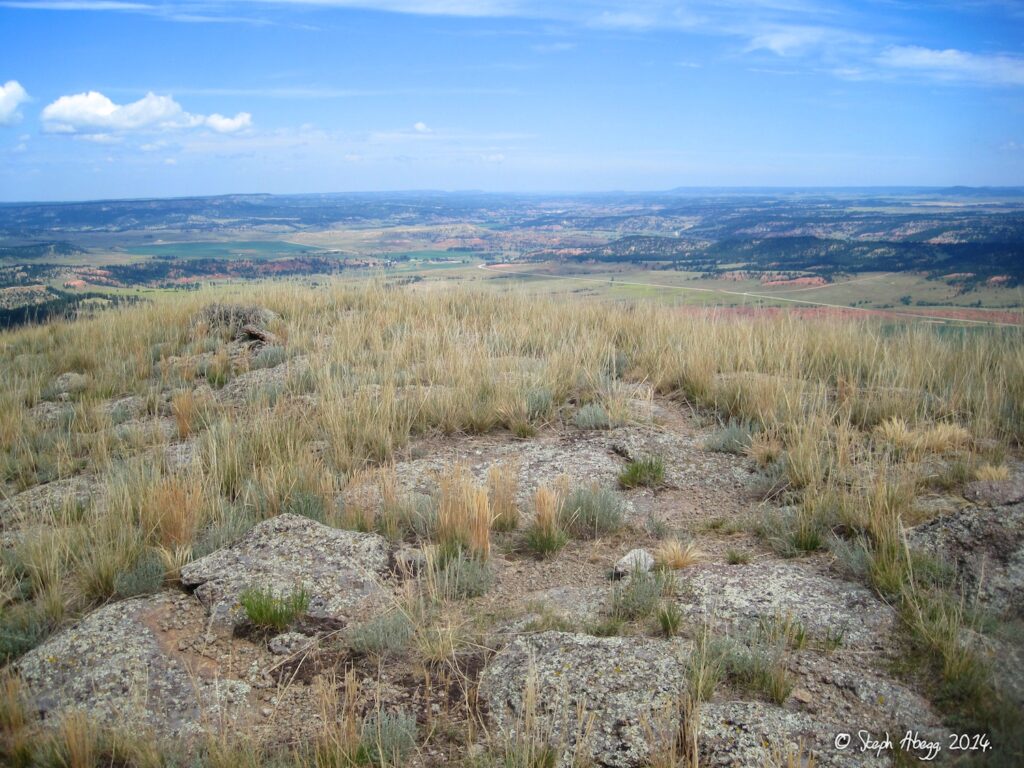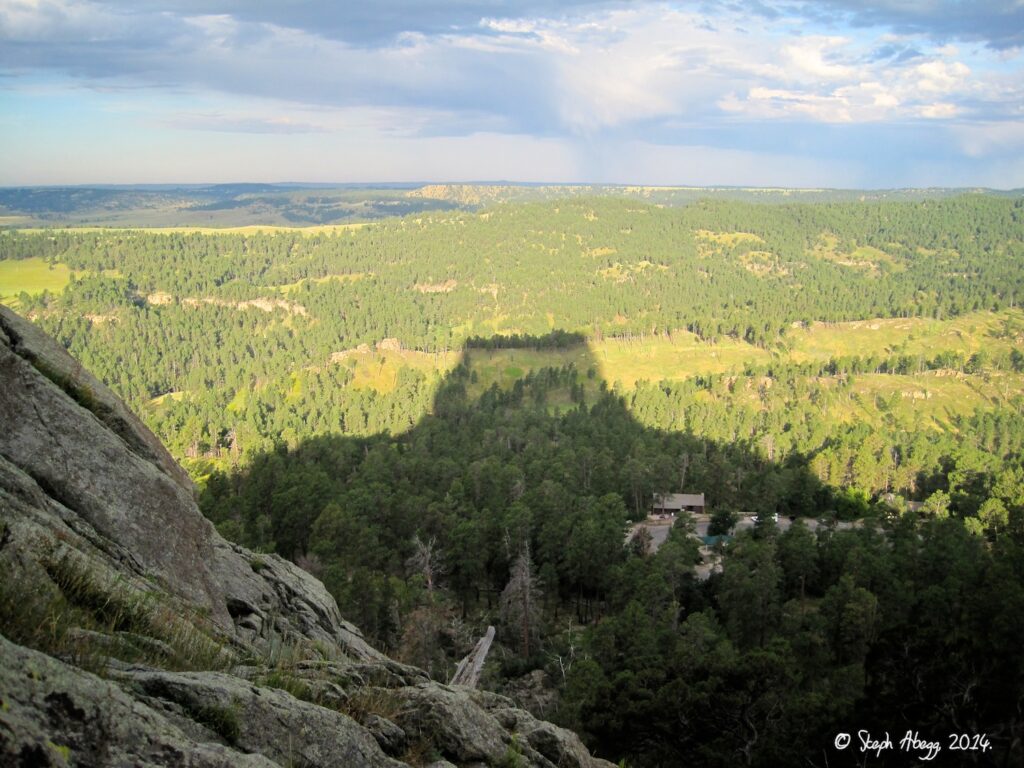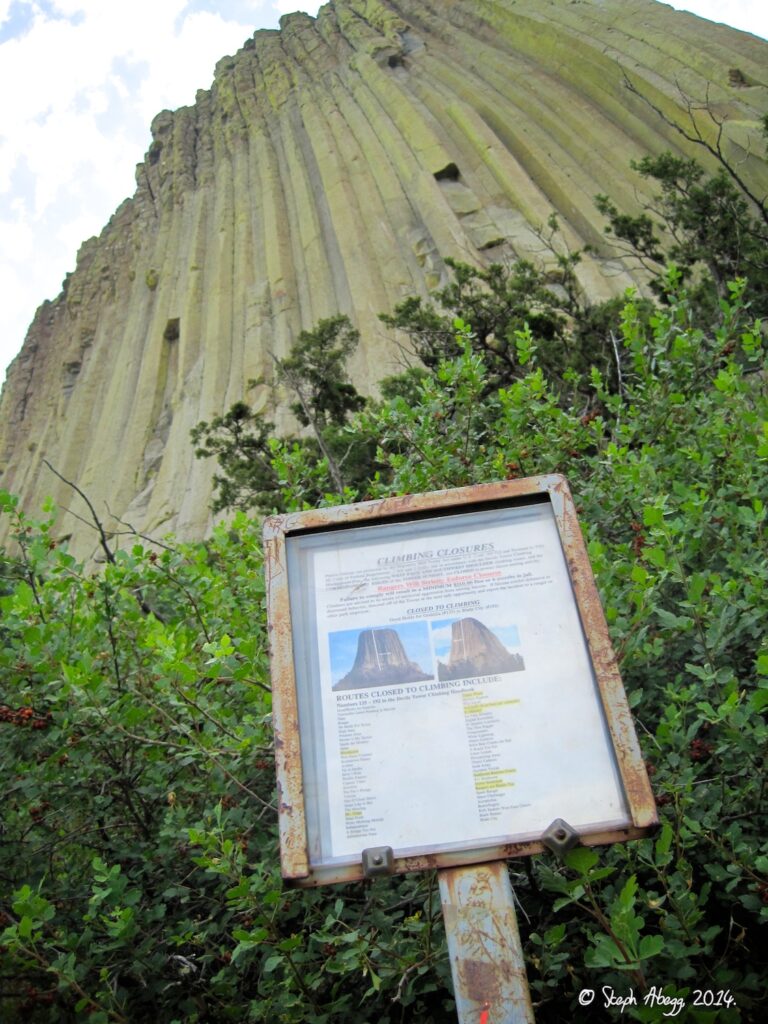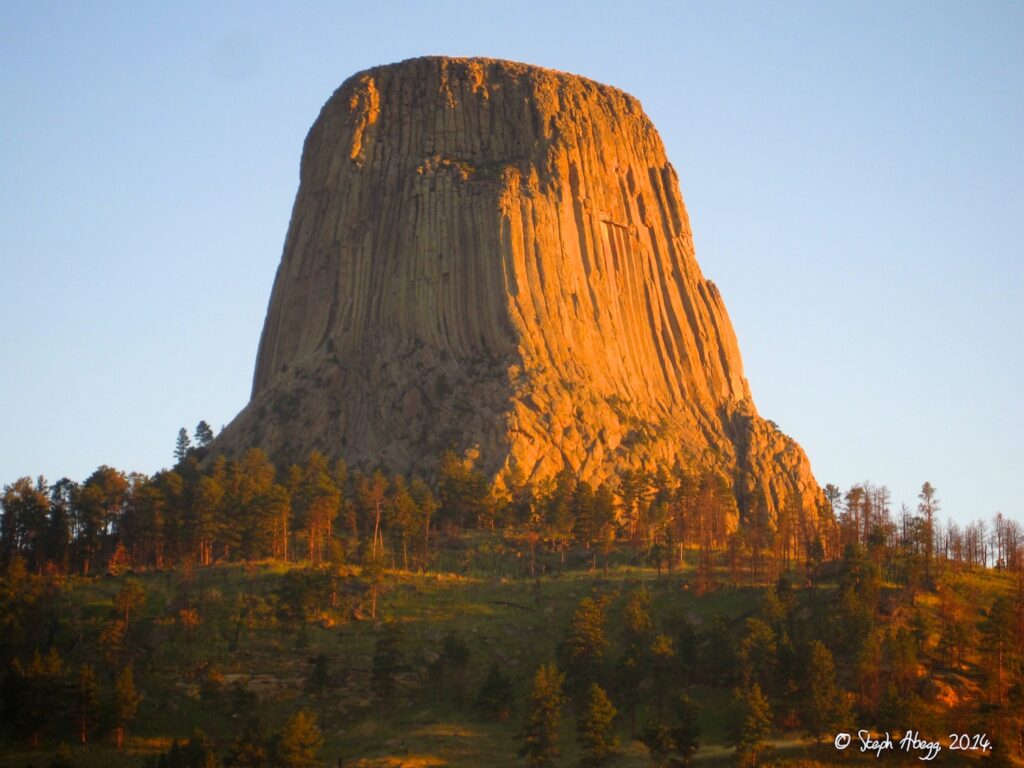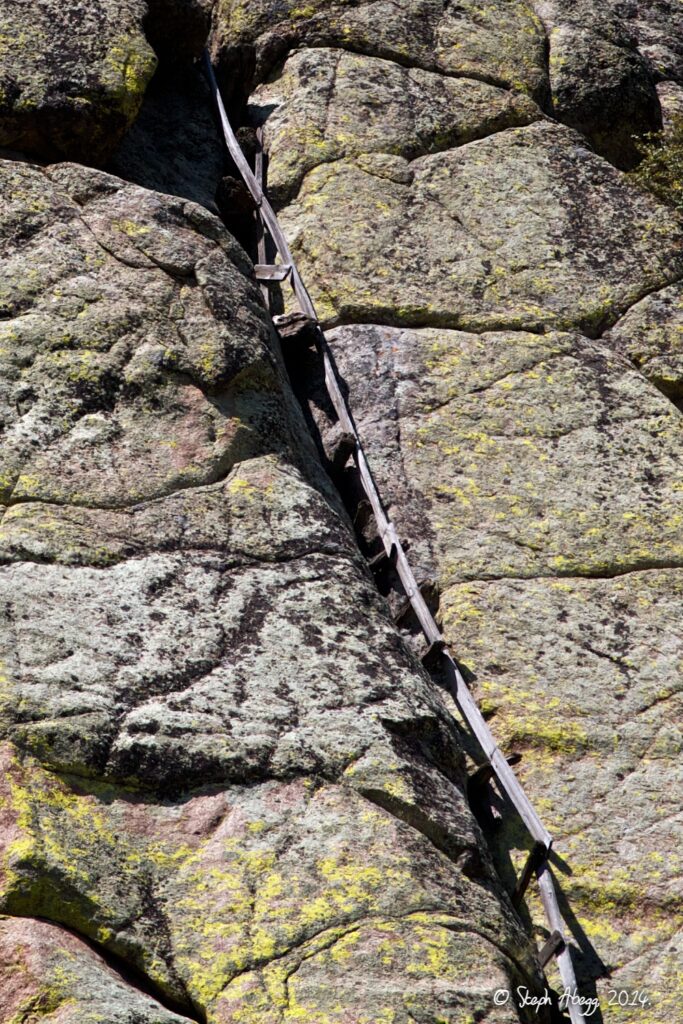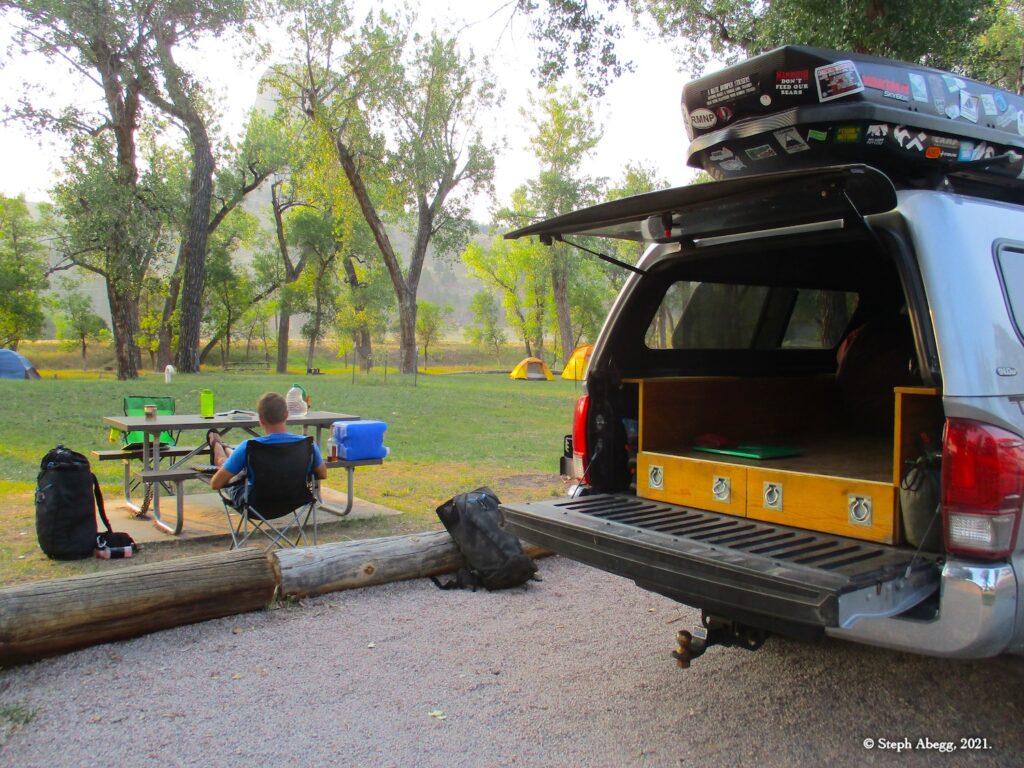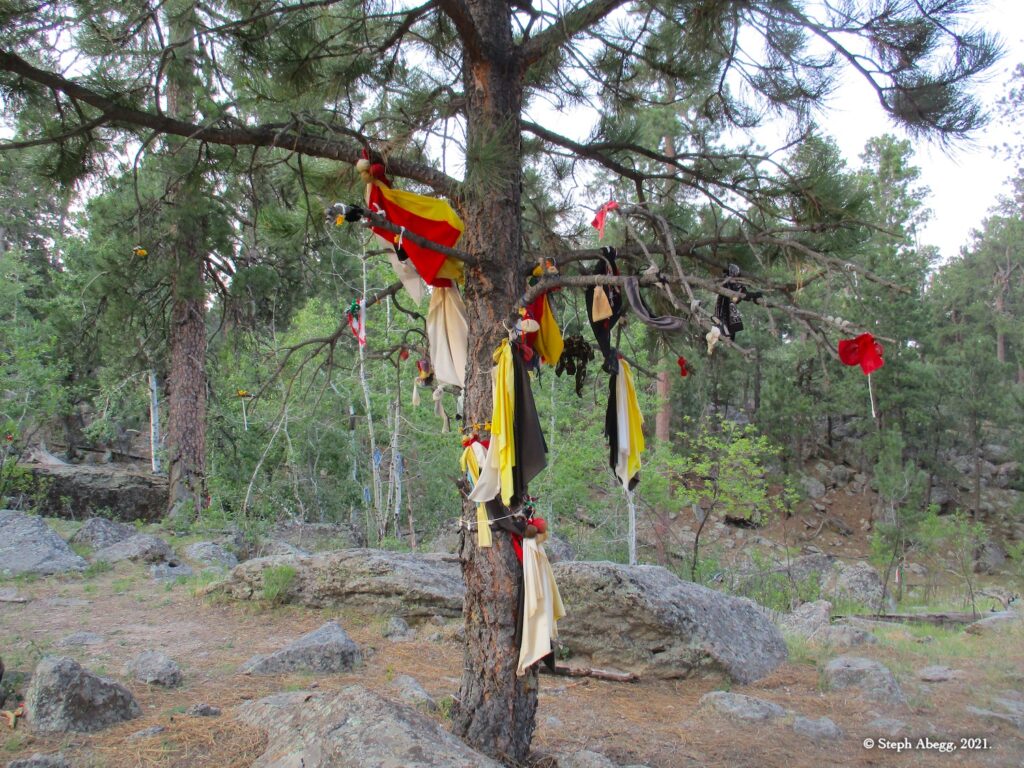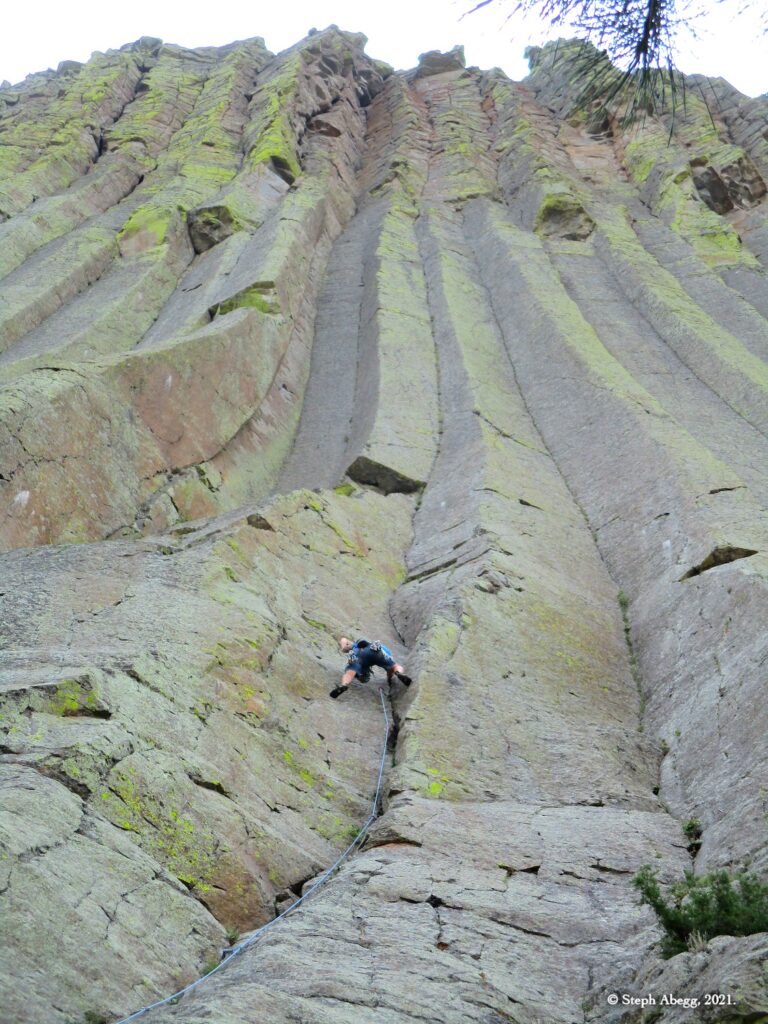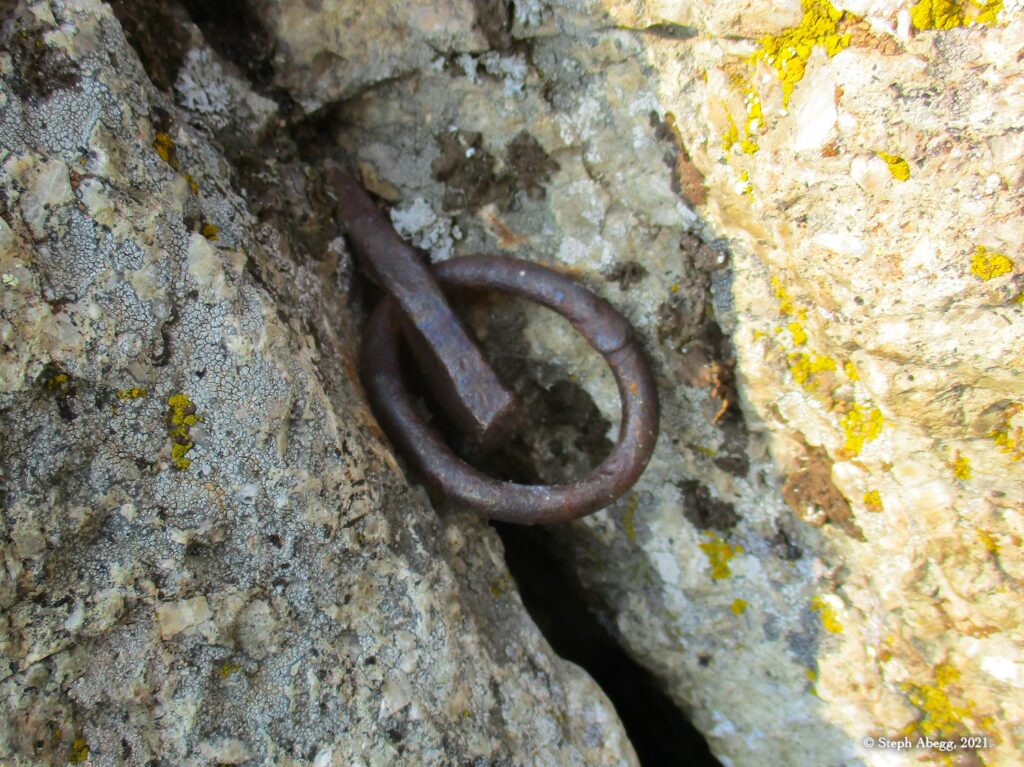A recent week-long climbing trip to the Cirque of the Towers inspired me to want to climb in the nearby Deep Lake area, an area that is less crowded than the Cirque but apparently has just as good of climbing. So I made a post on mountainproject.com looking for a partner. Eric responded to my post, and we made plans to meet at the trailhead a few days later. But an unforeseen wave of never-ending thundershowers settled in over the Wind River Range and thwarted our plans (
the dismal NOAA forecast). So where to go? I tossed out the idea of Devil's Tower, a climbing destination I had always wanted to check out. Devil's Tower was about 7 hours drive further east, and the weather looked great there. A little hot perhaps, but we figured we could chase the shade around the Tower and be fine. So to Devil's Tower we went.
We hung out at Devil's Tower for 4 days, climbing 3 of these days and photographing prairie dogs on the other day. I was impressed with the quality of the climbing on the Tower. The cracks are splitter, the rock is textured, and the pitches are long and steep and the grades are by no means soft. Many of the routes go to the top (or at least close to the top) of the Tower, but the rock quality is best on the lower half of the routes. So after climbing to the top on our first day (via One Way Sunset, a great 5-pitch 5.10c route), we spent the rest of our days cragging on the lower pitches of various classic routes.
This page provides a trip report for our impromptu trip to Devil's Tower.
Some Random Cool Facts About Devil's Tower
- Geologic History: About 50 million years ago molten magma was forced into sedimentary rocks above it and cooled underground. As hot, molten lava cools and solidifies it shrinks in volume and fractures along vertical planes, with geometric considerations often orienting the fractures into five- or six-sided polygons. Over millions of years erosion exposed Devil's Tower.
- Size: The Tower rises 867 feet from its base. The diameter of its base is 1,000 feet. An interesting question is: How many vertical columns are there along the Tower's circumference? I could find no statistic that answered this question, but Eric and I estimated there are somewhere between 150-200 columns. I could do a photo analysis but it would be tedious.
- Climbing Routes: Devil's Tower crams a high concentration of great cracks into the smallest area possible. Essentially, there is a beautiful crack every 5 or 10 feet, and they mostly run perfectly up and down. The climbs are long and sustained; many pitches are 165-190 feet long. The rock quality is excellent up until the last 100 feet of the tower or so, so many routes are best done by climbing the first 2-3 pitches and then rappelling. Fixed anchors are numerous. The easiest / most popular route up Devil's Tower is Durrance, which is located on the South Face of the Tower and is rated at 5.6 (some guidebooks rate it at 5.8 in which case it is not the easiest route, but in either case it is the most popular route on the Tower). Climbing on the west and north faces tends to be steeper and harder, ranging from 5.8 all the way up to 5.13 and more. In general, climbs that are 5.8 and under tend to be offwidths, 5.9 are hand cracks, and 5.10 are finger cracks.
- First Ascent: The first known ascent of Devil's Tower by any method took place on July 4, 1893, and is accredited to William Rogers and Willard Ripley, local ranchers in the area. They completed this first ascent after constructing a ladder of wooden pegs driven into cracks in the rock face on the southeast side of the Tower (just right of the Bon Homme route). Devil's Tower was first free climbed to the top by Fritz Wiessner on June 28, 1937 during his yearly travels through the area; his route—also on the southeast side of the Tower—is now known as the Wiessner Route and is rated at 5.7.


